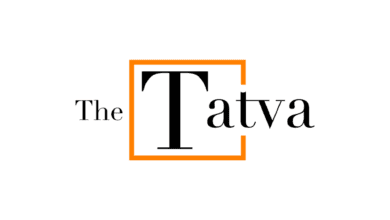Why Indian teens are entering puberty earlier than expected?
According to a recent study by the Indian Institute of Medical Research (IIMR), a staggering 10.4% of children aged 8-13 in India are displaying signs of early puberty.

Precocious or early puberty, marked by the premature onset of sexual and physical characteristics of adults, is becoming a significant concern in India. According to a recent study by the Indian Institute of Medical Research (IIMR), a staggering 10.4% of children aged 8-13 in India are displaying signs of early puberty. This percentage exceeds the global average of 5%, emphasizing the urgent need for research and intervention strategies, occurring before the age of 8 in girls and 9 in boys, has profound implications for both physical and emotional well-being.
Physical Impact and Statistics: The IIMR study indicates that at least 13 million Indian children are experiencing early. This premature development can impact growth, leading to premature bone maturation and shorter final adult height. The hormonal changes affecting the sex glands in boys (testicles) and girls (ovaries) play a crucial role in this process. Moreover, the emotional and social challenges associated with early puberty, such as low self-esteem and anxiety, can significantly affect a child’s overall well-being.
Emotional Challenges and Mental Health: Beyond the physical implications, early puberty introduces emotional challenges, especially in children between classes 5-9. Anxiety, depression, and other mental health issues are on the rise among these children. The premature physical changes associated with early puberty can lead to feelings of self-consciousness and social isolation, contributing to emotional distress. Peer relationships may be disrupted, further impacting the child’s emotional well-being.
Causes of Precocious Puberty: Understanding the causes of early puberty is crucial. Physical injuries like brain trauma, brain tumors, infections, and abnormalities can trigger precocious puberty. Additionally, issues with reproductive organs or adrenal glands may lead to peripheral precocious puberty. Tumors in the ovaries, genetic conditions like McCune-Albright syndrome, severe hypothyroidism, and adrenal gland disorders are specific causes. Notably, constant exposure to hormones in creams, medications, or supplements containing estrogen, testosterone, or androgen is also identified as a potential cause. Researchers have linked a higher body mass index (BMI) and the consumption of processed, high-fat foods to early puberty.
Signs and Symptoms: Recognizing the signs and symptoms of early puberty is crucial for timely intervention. Both sexes may exhibit acne, body odor, sudden growth spurts, breast development in girls, menstruation, and the growth of pubic and underarm hair. In boys, signs include a deepening voice, facial hair growth, enlargement of the penis and testicles, and muscle development.
Prevention and Intervention: Given the alarming prevalence of early puberty in India, there is a pressing need for preventive measures and interventions. Further research is essential to identify specific risk factors and develop targeted strategies. Early detection and medical intervention can help manage the physical and emotional consequences of precocious puberty. Additionally, raising awareness among parents, educators, and healthcare professionals is crucial for creating a supportive environment for affected children.
Disclaimer: The information provided in this article is for general informational purposes only and should not be considered a substitute for professional medical advice. Always consult with a qualified healthcare professional for personalized guidance based on individual circumstances.
You might also be intersted in – Afghanistan closes its Delhi embassy permanently, citing continued ‘challenges’ from Indian govt



